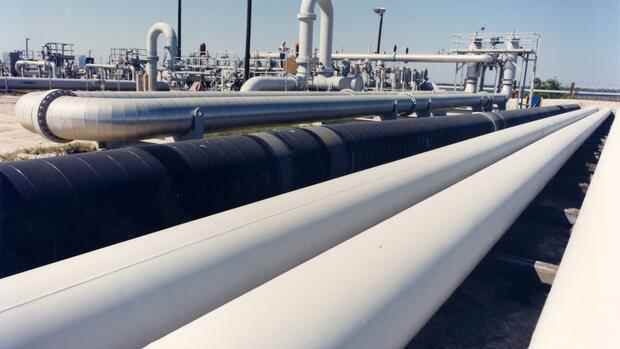The US holds strategic fuel reserves.
(Photo: dpa)
Zurich Despite high oil prices, the alliance of oil exporting countries OPEC plus sees no reason to intervene in the market. As the energy ministers of the 23 Opec-plus countries decided at a virtual summit meeting on Thursday, the alliance wants to stick to its long-term production policy and therefore increase oil production in April by only around 400,000 barrels per day.
This means that OPEC plus is sticking to its course of not letting the artificial limitation on production volumes expire until September. This goes back to the price crash on the oil market in spring 2020. In the meantime, the price of European Brent oil has leveled off well above the $100 per barrel (around 159 liters) mark. Within twelve months, the price of oil has increased by almost 80 percent.
So far, OPEC plus has shied away from breaking with Russia, which, along with Saudi Arabia, is one of the most powerful members of the alliance. Saudi Oil Minister Prince Abdulaziz bin Salman recently stressed that politics would be left out of the OPEC+ negotiations.
The US, on the other hand, has decided to release 180 million barrels of oil from national emergency reserves. According to this, the USA will provide one million barrels of oil per day for over half a year. This corresponds to around one percent of the daily global oil demand.
Top jobs of the day
Find the best jobs now and
be notified by email.
The move was “unprecedented,” the White House said on Thursday. “This record release will provide a historic amount of stocks that will serve as a bridge until the end of the year when domestic production ramps up.” The release has been discussed with international partners, it said.
US President Biden is under pressure
Commerzbank expert Carsten Fritsch spoke of a “so far unique measure”. He no longer sees the oil market undersupplied in the second quarter. “The US is opening the floodgates,” commented Helima Croft, an analyst at investment bank RBC Capital Markets
Speculations about such a measure had pushed oil prices down sharply on Thursday. The price of Brent oil was around $108 a barrel in the afternoon. In the meantime, the price was six percent lower.
The release of the US oil reserve shows how much US President Joe Biden is under domestic political pressure because of the high fuel prices. It is the third time in a few months that the US has drawn on its strategic reserve. According to oil expert Croft, this is currently being used as a tool to shield US consumers from the consequences of decisions in American foreign policy, in particular the harsh sanctions against Russia.
At the end of November 2021, Biden had 50 million barrels thrown onto the market. However, the measure was largely ineffective. At the beginning of March, the International Energy Agency (IEA) released crude oil, petrol and diesel from the reserves of its member states. The IEA is assigned to the association of industrialized countries OECD, which includes Germany as well as the USA.
The effect of such measures is debatable: Oil prices often drop briefly in response to relevant news. However, market participants often point out that releases from the strategic reserve often support oil prices in the medium term. Because such a step is a signal for an extremely tense market situation.
In addition, the stocks must be replenished after the end of the measure. Oil stocks worldwide are already at an extremely low level. In the current environment, it will probably take months, if not years, for these to be replenished.
However, it is becoming apparent that the Russian oil industry is also increasingly feeling the effects of the sanctions. According to media reports, refineries in Russia have already started to reduce the production of diesel and other fuels. The reason for this is therefore full storage facilities. In extreme cases, Russia could soon be forced to cut crude oil production as well.
More: Record prices for electricity and fuel: These are the beneficiaries of the energy price rally.
